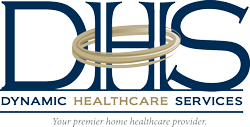Did You Know?
The average life expectancy of a CPAP machine is 20,000 hours or roughly 7 or 8 years of use. However, a well maintained CPAP machine can last up to 50,000 hours. One major component of keeping your machine in its best working order is keeping it and all of the related parts clean and replacing parts as they wear out. Read further to find out the health benefits of cleaning your supplies, what to use (and not use) for cleaning, how to clean the different parts, when to replace them, and tips on speeding up the cleaning process.
How NOT To Clean Your Equipment
There will be times when you’ll be tempted to use alternative methods and products if you run out of your normal cleaning supplies. But do not do it! Abrasive cleaners or other harsh chemicals can harm your supplies. However, when you do just run out, you can always use mild liquid soap and water until you’re able to obtain proper cleaning solutions. All of the following products should never be used on your machine or parts.
Do NOT use the following on your machine or parts:
- Any cleaner with bleach
- Any cleaner with ammonia
- Antibacterial wipes or soaps
- Chlorine
- Alcohol
- Any scented soaps or cleaners
- Any soap with moisturizer or lotion in it
- Hand sanitizer
- Any oil based products
- Any abrasive cleaner
Recommended Cleaning Schedule
This is a general cleaning schedule for machines and parts. Be sure to read the guidelines for your specific machine for any further recommendations. If you suffer from allergies or other medical conditions, more frequent cleanings may help especially.
Every Day
• Empty, clean, and set out water chamber to dry
• Drain excess water from tubing and hang to dry
• Wipe off your mask with a warm soapy cloth or a CPAP specific wipe
Once a Week
• Clean your entire machine
• Clean reusable filters
Basic Steps for Cleaning Your Entire Machine
- START EARLY. Clean your supplies in the morning so they will have time to dry before your next use.
- Unplug and disassemble every part of your machine, including the water chamber.
- Make or use a cleaning solution for use in the entire cleaning process. Either warm water with a mild non-perfumed liquid soap or a CPAP specifice cleaner.
- Wipe down the body of the CPAP machine with a warm soapy damp cloth or CPAP specific disposable wipe.
- Soak CPAP hose, mask, humidifier chamber, headgear, connectors, and cushions in cleaning solution and water.
- Wipe out mask with damp soapy cloth.
- Rinse each item with warm water.
- Hang each item to dry (out of direct sunlight).
- When all is dry, reassemble your CPAP machine.
Basic Steps for Cleaning your Water Humidifier Chamber
- Some humidifier chambers are dishwasher safe. Check your machine’s manual before using a dishwasher, and follow instructions if your chamber is dishwasher safe.
- Carefully remove chamber from humidifier.
- Rinse well with water and allow to dry (out of direct sunlight).
- Fill with distilled water and replace.
Basic Steps for Cleaning Reusable CPAP Filters
- Remove the filters from the machine.
- Rinse filters with water and allow to fully dry.
- Replace filters into machine.
Speed Up Your Cleaning Process
If you don’t have time for all of the cleaning, there are some handy products designed to make cleaning your CPAP parts a cinch.
CPAP Wipes Masks need cleaning after each use. These handy wipes make the daily cleaning chores go quickly. These are also great for travel
CPAP Spray This is another option for a quick clean job. This spray is especially handy for daily use.
CPAP Concentrated Cleaners These CPAP specific cleaners take the guesswork out of making your own cleaning solution. Useful for the big clean days.
Tips For Keeping Up With Your Cleaning
Whether you are an old pro or a novice, keeping your machine in its best can feel like a challenge and also a chore. However, here are some helpful tips to keep in your back pocket for when you start to feel like all you do is clean your CPAP machine.
- Consider the time investment. While you might save money by using your own soap and water solution, your time investment can really start to add up when you think about all of the steps it takes to keep your parts in working order. It might be worth speeding up your routine by using proper CPAP wipes or a spray on your mask and humidifier chamber.
- Early is best. It’s always best to do your cleaning right away. Otherwise, you’re going to have to stay up waiting for all of your gear to dry, or have a dirty machine built up with germs, bacteria, mold, etc.
- Do the right thing. Please read your CPAP manuals (even if it is tedious). Follow their specific advice. Keep up with regular maintenance and cleaning.
- Not so sunny. Never put your CPAP machine or parts in direct sunlight. Don’t put your headgear in the dryer. Don’t wash your CPAP parts in the dishwasher unless they are dishwasher safe. And, of course, never use abrasive products or harsh chemicals.
- Keep up with your treatment. Stay on top of your treatment. Sometimes, things change in your needs or sleep patterns. Talk to your doctor about those changes and they can help you make the right adjustments to your treatment.
- Ask for help. If you have any questions about your CPAP equipment, we are experts and would love to help. Please contact us if you have any questions. Email: info@dhscompanies.com or call us at: 800.845.4204

